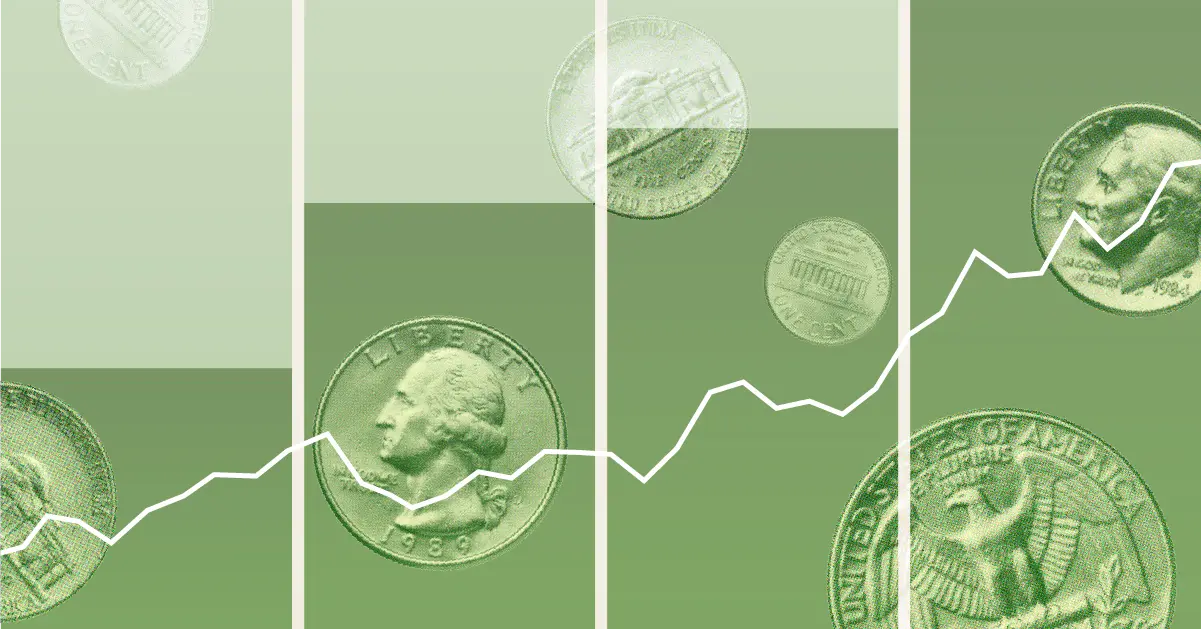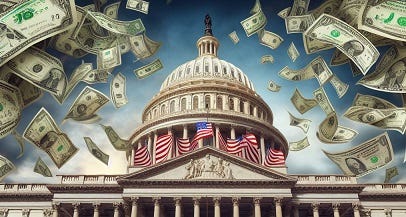U.S. Businesses Tackle Inflation and Rising Costs Amid Economic Pressures

February 28, 2025
The impact of inflation continues to reverberate across the U.S. economy, and businesses, both large and small, are feeling the squeeze. In 2025, inflation rates remain elevated, pushing up the costs of raw materials, labor, and logistics. In response, businesses are employing a variety of strategies to cope with these pressures, aiming to maintain profitability without alienating consumers or sacrificing product quality.
Key Challenges for U.S. Businesses in 2025Several factors are driving inflation and cost pressures for businesses:
Rising Raw Material Costs: As supply chain disruptions and geopolitical tensions continue, the cost of raw materials like oil, metals, and agricultural products remains high.
Labor Shortages and Wage Increases: The tight labor market is driving up wages, adding to the overall cost structure of many businesses. Companies are facing higher compensation demands to retain talent.
Logistics and Transportation Costs: Increased demand and higher fuel prices have led to spikes in transportation costs, making distribution more expensive for companies that rely on shipping and delivery.
Regulatory Changes: New regulations, including environmental standards and tax policies, are adding complexity and costs to business operations.
Strategies U.S. Businesses Are Using to Manage Inflation and Cost PressuresTo mitigate the effects of inflation and rising costs, U.S. businesses are implementing various strategies that focus on operational efficiency, customer retention, and pricing adjustments.
1. Increasing Operational Efficiency
One of the primary ways businesses are managing rising costs is by improving their operational efficiency:
Automation and Technology: Businesses are increasingly turning to automation and technology to streamline processes and reduce reliance on manual labor. From manufacturing lines to customer service, automation helps reduce costs in the long term while improving productivity.
Lean Management Practices: Many businesses are adopting lean management practices to eliminate waste, optimize processes, and reduce overhead. This includes identifying inefficiencies and implementing continuous improvement strategies.
Outsourcing and Offshoring: In some cases, U.S. companies are outsourcing or offshoring certain functions to countries with lower labor costs. This approach allows businesses to cut expenses while maintaining competitiveness.
2. Adjusting Pricing Models
With rising costs across the board, many businesses are adjusting their pricing strategies to reflect inflationary pressures:
Price Increases: While not all businesses are eager to raise prices, some have had to do so to protect margins. However, price hikes are often implemented gradually to avoid alienating customers. In certain sectors, businesses are passing on the higher costs directly to consumers.
Value-Based Pricing: Instead of simply increasing prices across the board, many businesses are shifting to value-based pricing models. This approach focuses on emphasizing the value provided to customers, allowing businesses to charge premium prices for high-quality or unique products.
Subscription Models: Subscription-based services are increasingly being adopted, especially in industries like media, technology, and food delivery. By shifting to a subscription model, companies can lock in steady revenue streams and better predict their cash flow.
3. Strengthening Customer Relationships
Maintaining strong relationships with customers is critical during times of economic uncertainty. Companies are focusing on loyalty and retention to mitigate the impact of inflation:
Customer Loyalty Programs: Many businesses are expanding their customer loyalty programs to encourage repeat purchases and enhance customer retention. Offering discounts, rewards, or exclusive offers can help businesses build customer loyalty in the face of higher prices.
Personalized Services and Experiences: Businesses are increasingly using data analytics to offer more personalized products and services to their customers. Personalization helps improve customer satisfaction and allows businesses to differentiate themselves from competitors.
Customer Communication: Open and transparent communication with customers is more important than ever. Companies are educating consumers about the reasons for price increases or changes in service to maintain trust and understanding.
4. Reducing Non-Essential Costs
To protect profitability, many businesses are trimming non-essential expenses and focusing on their core operations:
Cutting Back on Non-Essential Expenditures: Companies are reviewing their budgets and cutting back on non-essential expenditures, such as luxury office perks, business travel, or discretionary marketing spending. This helps to free up capital for other areas of the business.
Outsourcing Non-Core Functions: Some businesses are outsourcing non-core functions like IT support, HR, and customer service to specialized firms that can perform these tasks more efficiently, reducing overhead costs.
Energy Efficiency: With rising energy costs, businesses are looking to improve their energy efficiency. Implementing energy-saving technologies, reducing waste, and shifting to renewable energy sources are helping companies lower operational costs.
5. Innovation and Product Diversification
Innovation is a key way businesses are positioning themselves for the future. By diversifying their product lines or introducing new services, companies are able to tap into new revenue streams:
New Product Lines: Many companies are introducing new products or services to meet changing customer demands. In sectors like consumer electronics, fashion, and food, innovation allows businesses to stay relevant in a competitive market.
Sustainability Initiatives: Consumers are becoming more eco-conscious, and many businesses are capitalizing on this by introducing sustainable and eco-friendly products. Sustainability not only helps address customer concerns but can also lead to cost savings through efficiency and reduced waste.
As inflation is expected to remain a challenge in the near term, businesses will need to continue adapting to these pressures. The key to long-term survival will be innovation, efficiency, and a strong relationship with customers. While economic uncertainty may persist, companies that are able to remain flexible and responsive will be best positioned to thrive.

U.S. Investment Policies: Key Trends and Effects on Markets
Explore how U.S. investment policies shape financial markets, economic growth, and business strategies, offering both opportunities and challenges for investors

U.S. Investment Policies and Their Role in Business Development
Explore how U.S. investment policies influence business growth, offering opportunities and challenges for industries. Understand the key regulations and strategies driving economic expansion

U.S. Investment Policy Reforms: Shaping the Future of Business
Explore the key investment policy reforms in the U.S. economy that are reshaping business strategies, influencing markets, and creating new opportunities for investors

A Comprehensive Look at U.S. Investment Policy Shifts in 2025
In 2025, U.S. investment policies have undergone significant transformations. Discover how these reforms are impacting industries, investment strategies, and economic growth

Analyzing the Impact of U.S. Investment Policies on Investment Strategies
Explore how evolving U.S. investment policies create new opportunities and risks for investors. Learn how changes in tax, trade, and financial regulations affect investment strategies

A Look Ahead: U.S. Investment Policies and Financial Market Trends
As the U.S. economy evolves, so do its investment policies and financial markets. Discover what the future holds for investors as we explore trends, innovations, and challenges in U.S. investment strategies

A Guide to Understanding U.S. Investment Policies for Business Growth
Explore how U.S. investment policies impact business success. Learn how to navigate key regulations, tax incentives, and funding opportunities to maximize growth potential

How U.S. Government Policies Influence Investment Approaches
The U.S. government plays a key role in shaping investment strategies through regulatory frameworks, fiscal policies, and incentives. Explore how these factors impact business decisions and investment trends

U.S. Investment Policies and Global Impact
U.S. investment policies are reshaping global markets, influencing trade, foreign investments, and economic stability. This article explores the implications for international businesses and investors
The Atlantic Daily
Get our guide to the day’s biggest news and ideas, delivered to your inbox every weekday and Sunday mornings. See more newsletters
.webp)
Ideas That Matter
Subscribe and support more than 160 years of independent journalism.
Subscribe